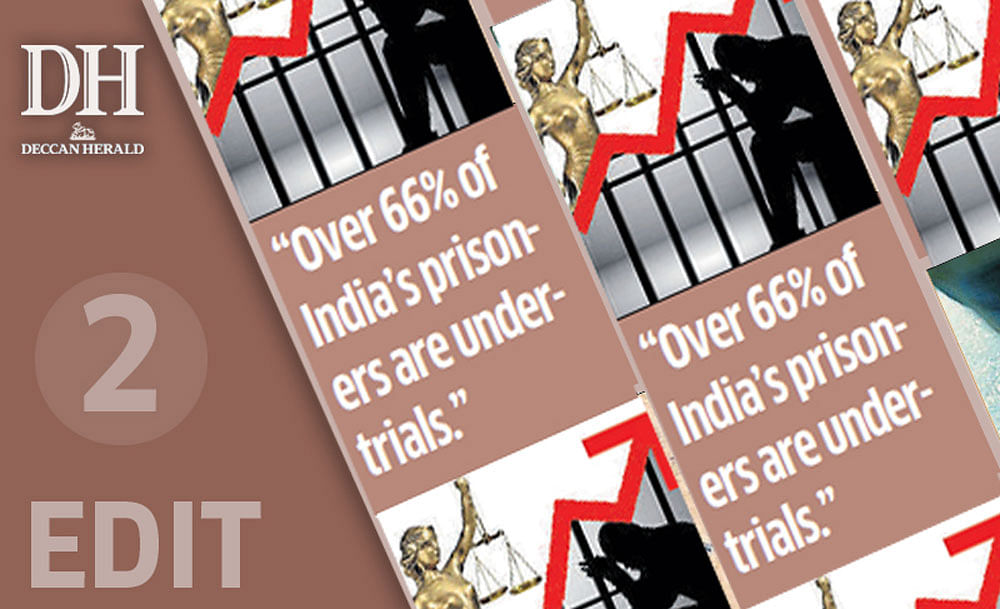
India's undertrial population is rising. According to data provided by the Ministry of Home Affairs to
Parliament, the number of undertrials lodged in India's jails rose from 2.82 lakh in 2015 to 2.93 lakh in 2016. Between 2014 and 2015, the number of undertrials had fallen for the first time in several years. Hopes raised by that dip in numbers have been dashed with latest figures showing a 4% increase. Although Karnataka does not figure among the states with the highest number of undertrials, it cannot ignore the problem. The state had 10,504 undertrials in 2016, up from 9,314 in 2015. Over 66% of India's prisoners are undertrials. This is twice the global average of 32%. Underlying India's large and growing number of undertrials is a seriously flawed justice system. Undertrials are prisoners awaiting trial. They are prisoners although they are not convicted criminals. A significant number of them serve jail time far exceeding the sentence their crimes, if proven, may entail. Indeed, many undertrials may not have committed a crime in the first place and languish in prison simply because they could not afford, or were denied, bail. Our criminal justice system works at a snail's pace; courts are overloaded with cases and there is a shortage of courtrooms, judges and lawyers; jail authorities do not receive information identifying the court and date of hearing. Instead of delivering timely justice, India's tardy criminal justice system keeps lakhs of people locked up in shabby, even inhuman, conditions.
Marginalised communities constitute the bulk of India's undertrial population; 53% are Dalit, Adivasi or Muslim. They are predominantly poor and illiterate and many are unaware of their rights. Section 436A of the Criminal Procedure Code gives all undertrials the right to seek bail on serving more than one half of the maximum possible sentence on personal bond. But how many undertrials are aware of this right? In 2014, the Supreme Court called on state governments to release undertrials who qualified under Section 436A. But most state governments did not implement that order. Had they done so, the rights of undertrials would have been respected and it would have enhanced the credibility of our criminal justice system.
Imprisoning people who are not convicts is a gross violation of their rights. In addition, a large undertrial population results in overcrowding of jails and puts pressure on limited jail infrastructure, which in turn undermines jail security. On paper, the government has taken several steps to reduce the pressure on the judicial system. It has set up fast-track courts, for instance. Clearly, these measures are not enough or are being implemented half-heartedly.